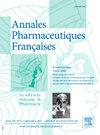[应用于肺移植受者免疫抑制剂浓度监测的风险分析]。
IF 1.1
Q4 PHARMACOLOGY & PHARMACY
引用次数: 0
摘要
掌握和监测免疫抑制剂浓度是肺移植患者护理的核心,涉及多个利益相关方。我们的目标是进行风险分析,以评估所采取的各种行动的影响。肺移植团队被召集起来进行故障模式影响分析。该过程被划分为若干阶段,在这些阶段中确定了不同的风险。在实施行动之前(2009 年之前)和实施行动之后(2022 年),分别确定了风险优先级编号(RPN)(严重性、频率、可检测性)和风险临界等级(频率、严重性),将风险按四个临界等级分类。已实施的行动包括建立质量保证流程、监测计算机化以及由一对医生/药剂师进行双重分析。在该流程的四个阶段中发现了 32 项风险:生物采样(13 项)、接收(3 项)、分析和处理水平(5 项)、向患者传输信息/处方(11 项)。原始 RPN 总数(2009 年前)为 839,主要风险为 12。目前的 RPN 总数(2022 年)为 452(下降了 46.1%),发现了 7 个重大风险。该过程中最安全的阶段是接收剩余级结果。工作重点应放在增强患者的能力和参与度上,并让当地利益相关者与专业移植团队合作。本文章由计算机程序翻译,如有差异,请以英文原文为准。
Analyse de risques appliquée au suivi des concentrations des immunosuppresseurs chez les patients transplantés pulmonaire
La maîtrise et le suivi des concentrations des immunosuppresseurs est centrale dans le suivi des patients transplantés pulmonaires et engage plusieurs intervenants. L’objectif est de mener une analyse de risque afin d’évaluer l’impact de différentes actions entreprises. L’équipe de transplantation pulmonaire a été réunie pour réaliser une analyse des modes de défaillances de leurs effets et de leur criticité. Le processus a été découpé en étapes où différents risques ont été identifiés. L’index de criticité (gravité, fréquence, détectabilité) et la sévérité (fréquence, gravité) ont été établis avant implémentation des actions (avant 2009), puis après (en 2022) pour classer les risques selon quatre niveaux de criticité. Les actions implémentées ont été : la mise en place d’un processus d’assurance qualité, l’informatisation du suivi et la double analyse par un couple médecin/pharmacien. Trente-deux risques ont été identifiés au cours des quatre étapes du circuit : prélèvement biologique (n = 13), réception (n = 3), analyse et traitement des taux (n = 5), transmission d’informations/prescriptions au patient (n = 11). La criticité brute totale (avant 2009) était de 839, et 12 risques majeurs. La criticité actuelle totale (2022) est de 452 (diminution de 46,1 %), avec 7 risques majeurs retrouvés. L’analyse a permis d’objectiver l’efficacité des actions entreprises. L’étape du circuit la plus sécurisée est la réception des résultats des taux résiduels. Les efforts doivent être tournés vers l’autonomisation et l’implication des patients, ainsi que le recours aux acteurs de proximités en collaboration avec l’équipe spécialisée de transplantation.
Mastering and monitoring immunosuppressant concentrations is central to the care of lung transplant patients and involves multiple stakeholders. The objective is to conduct a risk analysis to evaluate the impact of various actions taken. The lung transplantation team was convened to carry out a failure mode effect analysis. The process was divided into stages where different risks were identified. The risk priority number (RPN) (severity, frequency, detectability) and risk level of criticality (frequency, severity) were established before implementation of actions (before 2009) and then after (in 2022) to classify risks according to four levels of criticality. The implemented actions included the establishment of a quality assurance process, computerization of monitoring, and double analysis by a physician/pharmacist pair. Thirty-two risks were identified during the four stages of the process: biological sampling (n = 13), reception (n = 3), analysis and treatment of levels (n = 5), transmission of information/prescriptions to the patient (n = 11). The total raw RPN (before 2009) was 839, with 12 major risks. The current total RPN (in 2022) was 452 (a decrease of 46.1%), with 7 major risks identified. The analysis enabled the objective evaluation of the effectiveness of the actions taken. The most secure stage of the process is the reception of residual level results. Efforts should focus on empowering and involving patients, as well as engaging local stakeholders in collaboration with the specialized transplantation team.
求助全文
通过发布文献求助,成功后即可免费获取论文全文。
去求助
来源期刊

Annales pharmaceutiques francaises
PHARMACOLOGY & PHARMACY-
CiteScore
1.70
自引率
7.70%
发文量
98
期刊介绍:
This journal proposes a scientific information validated and indexed to be informed about the last research works in all the domains interesting the pharmacy. The original works, general reviews, the focusing, the brief notes, subjected by the best academics and the professionals, propose a synthetic approach of the last progress accomplished in the concerned sectors. The thematic Sessions and the – life of the Academy – resume the communications which, presented in front of the national Academy of pharmacy, are in the heart of the current events.
 求助内容:
求助内容: 应助结果提醒方式:
应助结果提醒方式:


